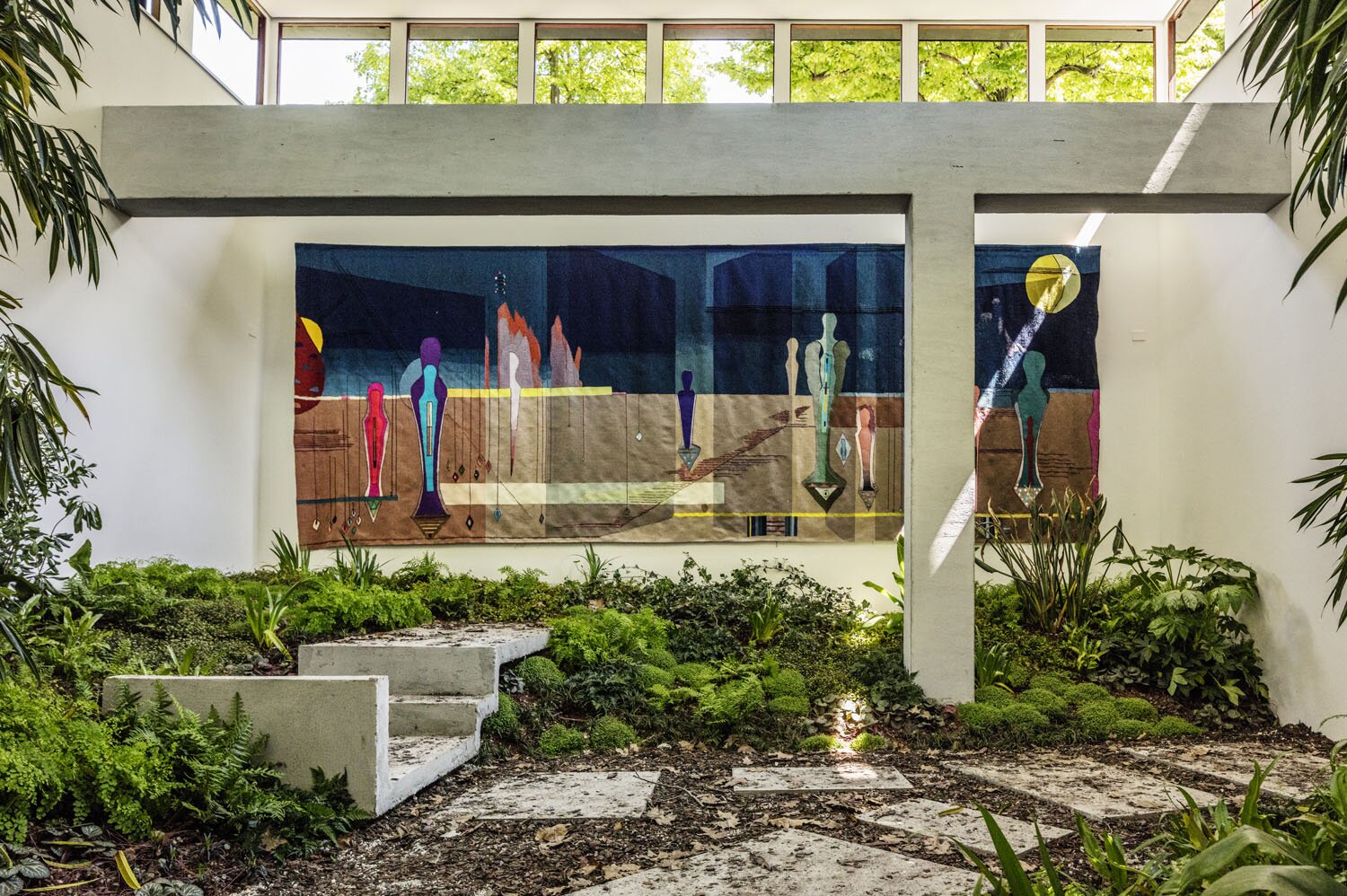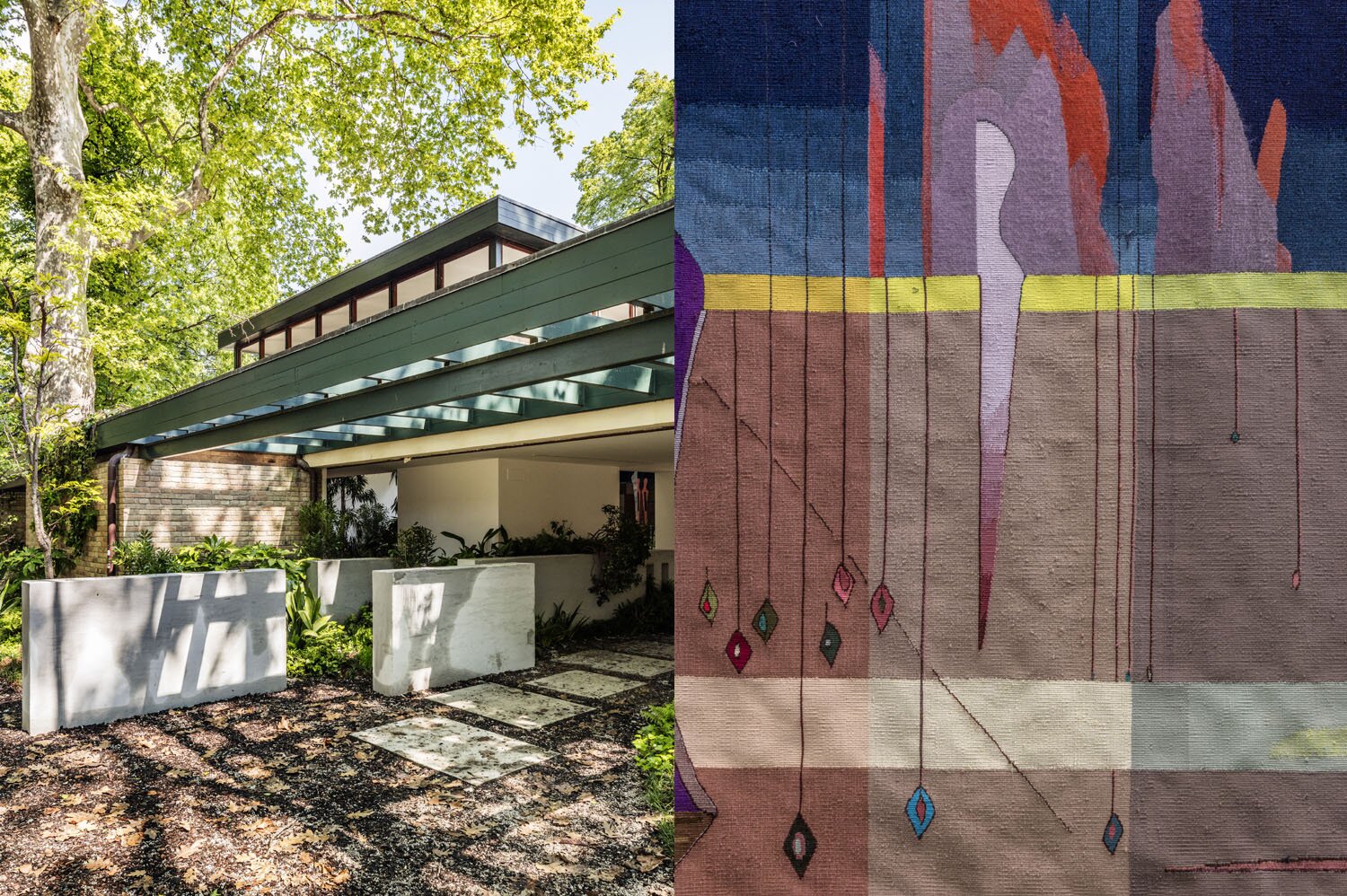To paraphrase the meme, sometimes, modern life comes at you fast. And for over a century, some of the most progressive artists have been incorporating the mayhem of our multi-media existence into their work. Among the inheritors of this anti-tradition is Copenhagen-born artist Kirstine Roepstorff, who is representing Denmark at 2017’s Venice Biennale with her large-scale immersive installation influenza: theatre of glowing darkness. “This is about relearning the potential of darkness,” Roepstorff told Oak. “Our culture has for many thousands of years taught us to fear and reject the darkness. Instead, we have been celebrating the light. We hold on to this light, which of course provides us with nurture and progress – but we need the darkness too.” Roepstorff uses darkness, light projections, glass and sound to explore darkness as a form of reconciliation, within the cycle of death and rebirth. In the pavilion and surrounding gardens she also created a structural intervention, with echoes of previous work that has stretched across a range of mediums, from her vast concrete sculptures to delicate brass mobiles. Here she spoke with Oak about finding emancipation in the darkness.
What’s the significance of the title “Influenza”?
The title Influenza is a metaphor and refers to a condition, a kind of weakness, which I find many of us today suffer from. It’s a hyper-intention to connect to everything around us, and yet we have difficulties and often fail to connect to ourselves and to the people right next to us.
Is this virus a metaphor – or a direct reference to the disease?
You can compare the world as we have known it for decades to an extremely old and worn out dinosaur, whose flesh is falling off and whose bones are about to break. For many many centuries the focus of our culture has been growth and progress but somewhere in this strive we forgot that growth and retreat are closely connected. Basically, we have divided light from darkness. We made our light strong and we weakened our darkness with fear and resistance, and thus we grow weak ourselves. Much like we see in nature and plants, life need darkness to grow. It’s this cyclic rhythm that we need to observe and embrace.
How does it respond to the title of the Biennale “Viva Arte Viva”?
It doesn’t respond to the title directly, but I believe that Marcel and I share a common fight to make the world a better place. Instead of just criticizing, we both point towards a positive and hopeful approach.
Is collage an especially resonant medium in which to work today?
The themes in my art have been almost unchanged ever since I started working with art. However, my approach has changed a lot over the years. In my collages, I have always been drawn towards the notion of the in-between, which is the essence of collage as a medium. The knowledge I have gained by working with collage, I then bring it to the media in which I’m engaging for this project in Venice. To me, the in-between spaces are pure potential – like the darkness I advocate.
The Venice Biennale runs until November 26th. www.danishpavilion.org

